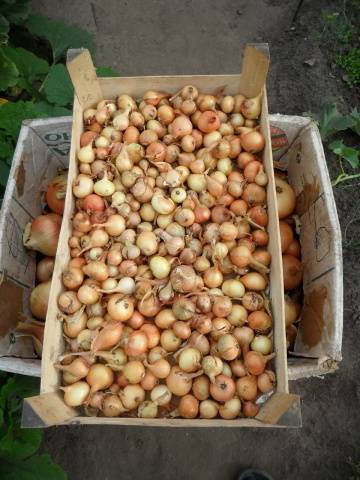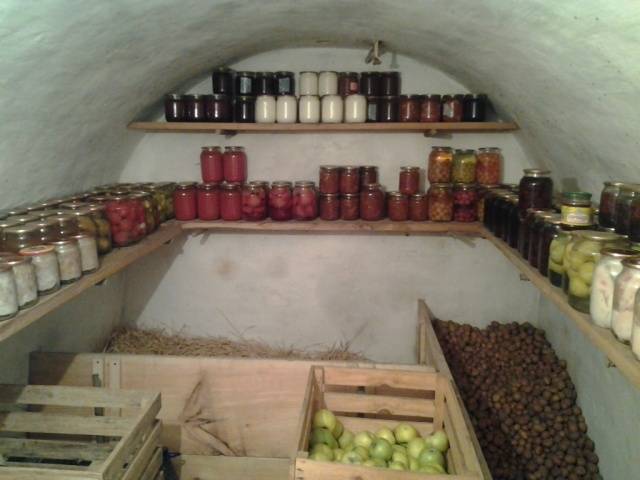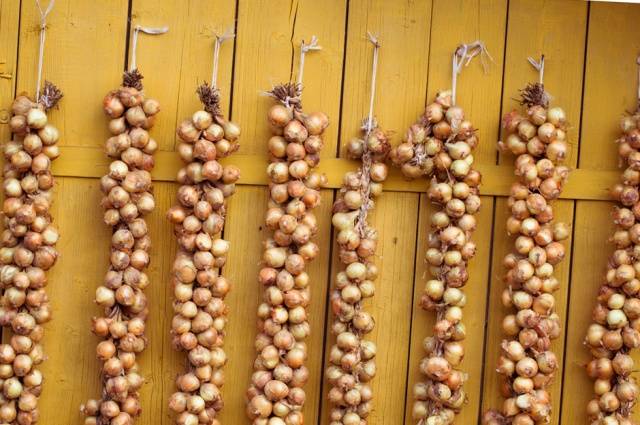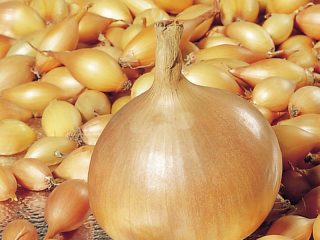Content
Growing onion sets from onions has a lot of advantages, and getting planting material from seeds is not at all difficult. WITHThe most important thing is to preserve the onion set until next spring, because in winter it faces a lot of troubles: from rotting and freezing to drying out and early germination. As you know, it is the improper storage of onion sets that leads to bolting of adult plants and loss of most of the harvest.
This article will be devoted to how to store onion sets in a private house or city apartment. Various storage methods will also be discussed here, and the spring and autumn preparation of planting material will be discussed.
How to prepare onion sets for winter storage
The seedlings are usually harvested at the end of August. You can tell that the onion is fully ripe by the condition of the tops: the leaves should lie on the ground and turn yellow.
After the onion set is collected, it must be sorted and sorted. Only whole, healthy bulbs, without signs of damage or rot, are suitable for planting in spring. It must be remembered that even one infected bulb can lead to damage to the entire planting material.
The second important step is drying the onion sets. It is recommended to dry the sets in the sun, and a dry and well-ventilated room or place under a canopy is also suitable.
How and where to store onion sets before planting
Only lattice containers or bags with good air permeability are suitable for storing sets, because onions must be constantly ventilated so as not to rot or become moldy.
Therefore, onion sets are most often stored in:
- bags;
- grids;
- wooden boxes;
- plastic containers;
- trays;
- in bulk.
Storing onion sets in bulk does not mean that the heads are simply laid out on the floor. Planting material should be high above the ground, so it is customary to place it on shelves or in attics. In these cases, the onions are laid out in a 15-20 cm uniform layer. There must be good ventilation in the room with the seedlings, otherwise rot cannot be avoided.
How to store onion sets in a warm way at home
Most often, this method is used by those who live in an apartment or do not have their own basement.
You can store the seeds at home before sowing, but you should follow some rules:
- do not allow onion sets to overheat, so do not place the storage near radiators and heating devices (a pantry or a warm loggia is most suitable for storage);
- do not over-humidify the air around the onion set, so do not place it near water sources (do not store seeds in the kitchen or bathroom);
- ensure regular ventilation of the onion;
- avoid exposure to direct sunlight;
- periodically sort through the sets to remove rotten or infected heads.
At home, onion sets are usually stored in cardboard boxes, small wooden or plastic boxes, or in bags.
How to properly store onion sets in the cellar before planting
Residents of country houses usually do not have a question about where to store onion sets until next spring. After all The best place for these purposes is a home basement or cellar, where a stable above-zero temperature is maintained all winter.
The method of storing onion sets in the basement is called the cold method, and it gives better results compared to storing onions at home:
- fewer rotten heads;
- the sets do not dry out;
- no early germination;
- mature plants do not shoot;
- The onion harvest is large and stable.
In the cellar, onions are stored in any convenient container, these can be boxes, bags or crates. Sevok is perfectly stored in the basement until spring, and before planting it must be warmed up. To do this, 2-3 weeks before planting, the heads are brought into the house, sorted out and laid out in a dry and warm place.
How to keep onions in the ground
There is another, very unusual way - the onion sets are simply stored in the beds, that is, in the ground. To do this, the heads are planted in late autumn as they would be planted in the spring. During periods of low temperatures, the seedlings will freeze, and with the onset of warmth they will “wake up” and quickly begin to grow.
This method has its advantages:
- the heads do not dry out;
- in a frosty winter with stable temperatures, the onions will not begin to rot;
- The seedlings begin to germinate very early, so the harvest will be harvested ahead of schedule;
- the owner will not have to worry about containers and storage space, provide the onion sets with the necessary conditions, sort them out and warm them up;
- In the spring there is no need to plant the seedlings, because they are already in the garden.
Storing onion sets in a bucket
This method is similar to the previous one - the onions will also be frozen. Only in this case the seedlings are not planted, but buried in the ground. It is convenient to use an old bucket for these purposes.
A thick layer of dry sawdust is poured into the bottom of the bucket, and onion sets are laid on top. You should not fill the container to the brim, because the seeds must “breathe”. From above, the planting material is covered with approximately the same layer of sawdust.
All that remains is to dig a hole and place a bucket of onion sets underground. The container is first covered with a lid. The layer of soil above the bucket should be 15-18 cm.
What mode does the sevka need for proper storage?
Most of the planting material should “survive” until spring planting - this is the gardener’s task. Each storage method requires certain conditions for keeping onion sets:
- With the cold method, that is, during the period of storing the heads in the basement, a stable temperature in the room should be maintained at 2-8 degrees.
- If the onion is stored underground, it must be constantly frozen - this will ensure a temperature below -3 degrees.
- For those seeds that are in the house, a positive temperature is needed - from 17 to 24 degrees.
- In any case, the relative air humidity should be 65-75%.
Whatever method the gardener chooses, he should know that onion sets cannot be stored for more than one season: from harvesting to planting.
How to save “sick” onion sets
A good onion is one that lasted until spring unharmed, the heads remained firm and the husks dry. Growing a decent harvest from such seeds is not a problem. What to do if, during regular sorting, the gardener notices rotting heads?
As you know, rot spreads very quickly, and if the right measures are not taken, you can lose all the planting material in a matter of days. Firstly, it is necessary to remove the affected heads from the general container as quickly as possible. It is better to remove the neighboring bulbs, because they may already be infected with rot, which is not yet visible.
When a large number of bulbs have turned black, there is only one option left: to “undress” the sets, that is, to clear the heads of the husks infected with rot. There is no need to be afraid and even remove all the skins from the onion, because this plant is unique - onion sets are able to “grow” their scales again.
Conclusion
Keeping your own garden is no easy task.It will seem to many that storing seedlings is a complex process, and none of the methods gives a 100% result. Therefore, most gardeners and summer residents go out every spring to buy planting material, and onion sets are quite expensive.
Practice shows that you just need to find a method for storing onion sets that is suitable for a particular region, and then you will be able to save significantly on the purchase of planting material. This is especially important when growing vegetables on an industrial scale.



















